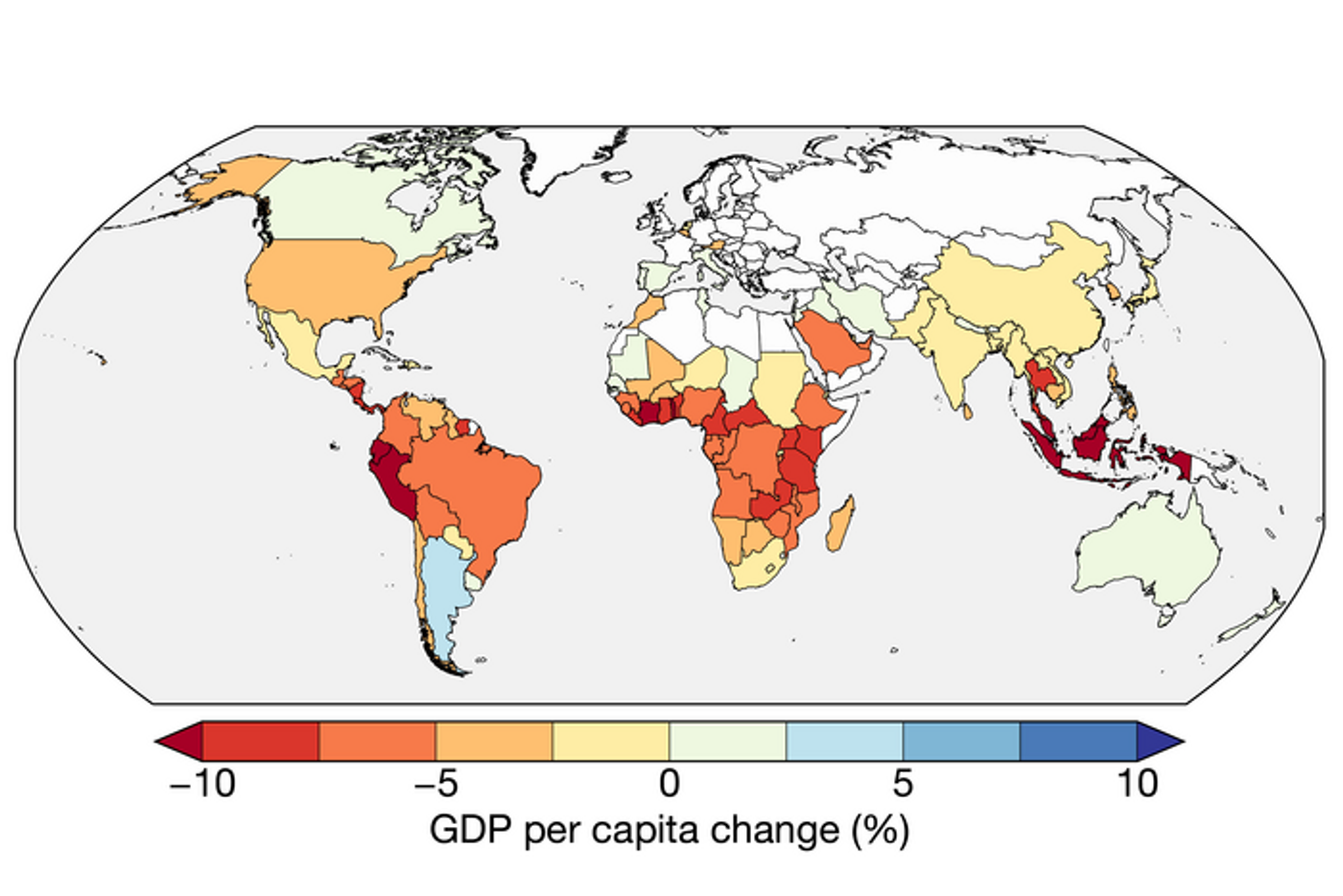Post-Years El Niño Could Result in Trillions in Lost Income Worldwide
How does the well-known storm system, El Niño, impact the global economy? This is what a recent study published in Science hopes to understand as a pair of researchers explore the long-lasting financial impacts of El Niño that could last for years and result in trillions of dollars in lost income around the world. This study comes as El Niño is projected to return sometime this year. While previous studies have estimated total financial losses for the legendary storm system, this recent study is a first-of-its-kind to analyze the long-term financial and project losses that greatly exceed those previous estimates.
Color scale indicating percentage change in Gross Domestic Product after the 1997-98 El Niño, from the greatest increase (blue) to the greatest decrease (red). (Credit: Chris Callahan)
"We can say with certainty that societies and economies absolutely do not just take a hit and recover," said Christopher Callahan, who is a PhD candidate in geography at Dartmouth University, and lead author of the study. He added by saying that the study’s data suggested a post-El Niño downturn could last up to 14 years, if not longer.
For the study, the researchers spent two years analyzing worldwide economic data in the decades after the 1982-83 El Niño and 1997-98 El Niño events. They discovered that in the five years after each event, the global economy lost $4.1 trillion and $5.7 trillion, respectively, along with demonstrating a “persistent signature” of reduced economic growth, as well.
"In the tropics and places that experience the effects of El Niño, you get a persistent signature during which growth is delayed for at least five years," said Callahan. "The aggregate price tag on these events has not ever been fully quantified—you have to add up all the depressed growth moving forward, not just when the event is happening."
Current projections by the National Oceanic and Atmospheric Administration state this year’s El Niño holds a greater than 90 percent chance of carrying into the Northern Hemisphere winter, the researchers project global economic losses could reach $3 trillion by 2029.
Callahan said this year’s El Niño is projected to arrive when the sea-surface temperatures are currently at all-time highs. The last major El Niño event happened in 2016, resulting in the hottest year on record, and the effects of climate change have only worsened since then. Additionally, the world is still emerging from a prolonged La Niña, and it’s hypothesized the two combined systems can strengthen each other.
"The deck is potentially stacked for a really big El Niño," Callahan said. "Our results suggest that there will likely be a major economic toll that depresses economic growth in tropical countries for potentially up to a decade. The result could be trillions of dollars in productivity lost globally relative to a world without this El Niño."
The global storm system known as El Niño occurs when warm ocean water that extends from South America to Asia that results in extensive weather variations and often leads to crop-killing droughts, a moderate increase in tropical diseases, catastrophic floods, and nosediving fish populations.
How will the 2023 El Niño impact the world, both physically and economically, and what new discoveries will researchers make about this well-known storm system in the coming years and decades? Only time will tell, and this is why we science!
Sources: Science, Dartmouth College, National Oceanic and Atmospheric Administration, National Geographic
As always, keep doing science & keep looking up!
-
APR 30, 2024Immuno-Oncology Virtual Event Series 2024
-
MAY 07, 20243rd International Biosecurity Virtual Symposium
-
SEP 03, 2024Microbiology Week Virtual Event Series 2024
- See More


















































